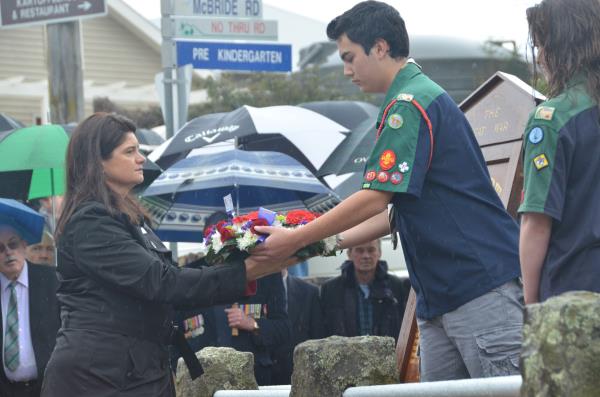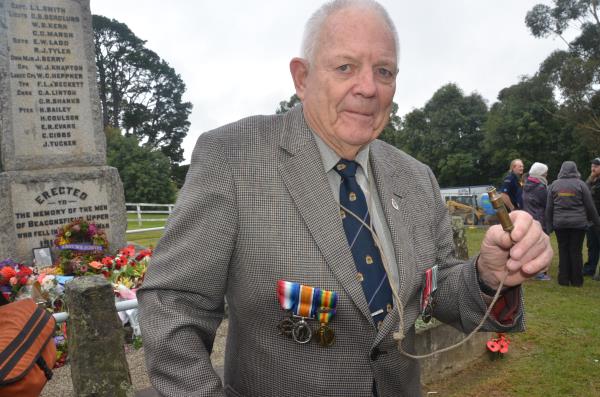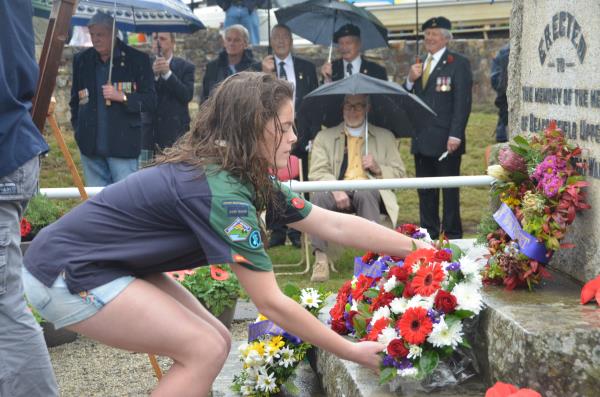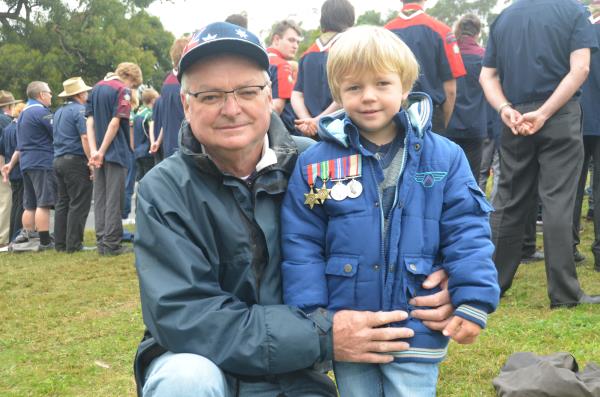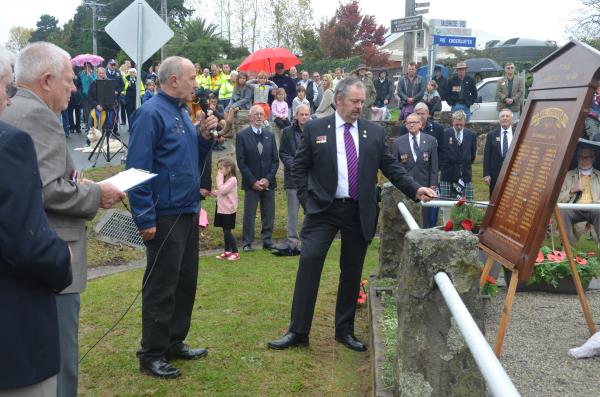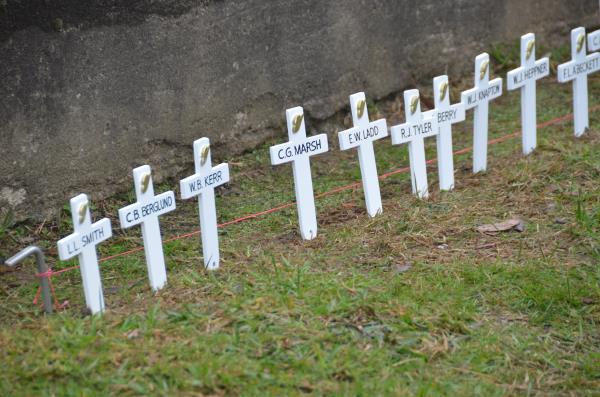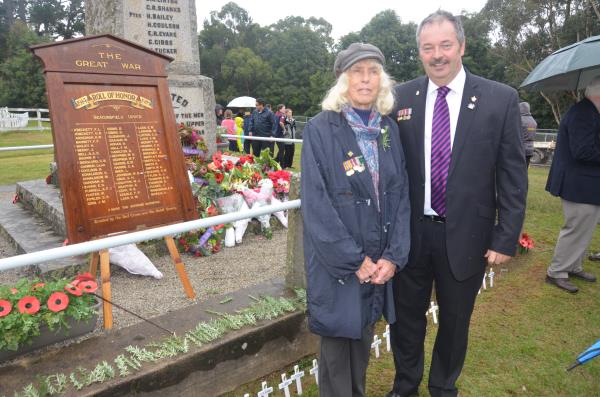By GARRY HOWE
A HAUNTING shriek twice rang through the Anzac Day service at Upper Beaconsfield on Saturday.
RSL Sub-branch president Eric Chaplin put an old war whistle to his lips and blew.
He pointed out that for many who died in the hostilities of Gallipoli 100 years ago and later on the battlefields of Europe, that whistle may have been the last sound they heard.
It was the signal for soldiers to jump out of their trench, on to the parapet and into no man’s land, often into a barrage of machine gun fire.
“I would like you all to think of those men who ran to their death at the sound of the whistle,” Mr Chaplin said.
“And what it would have been like for the second, third and fourth wave of soldiers, given they had the knowledge of what had happened before it was their turn.”
Mr Chaplin borrowed the whistle from his mate Bernie Dingle, who runs the Light Horse and Field Artillery Museum on Bessie Creek Road in Nar Nar Goon.
He read a military communique describing the first day at Gallipoli and then helped in the traditional reading of the names on the Honour Roll from both Upper Beaconsfield and Beaconsfield.
As the names of the fallen were read, small crosses bearing their names were hammered into the ground at the foot of the cenotaph.
Sub-branch secretary Geoff Davidson read The Ode to the Fallen.
Among the crowd was Lois Berglund-Dack, whose father Harold Horan was a member of the Light Horse Brigade in World War I and went on to serve with distinction in World War II.
His brother Lieutenant Charles Bertram Berglund is among the 17 names honoured on the Upper Beaconsfield cenotaph as a casualty of the Great War.
Harold Horan was for a time commanding officer of Frank Conn, a long-time president of the Upper Beaconsfield sub-branch and father of current treasurer Simon Conn.

